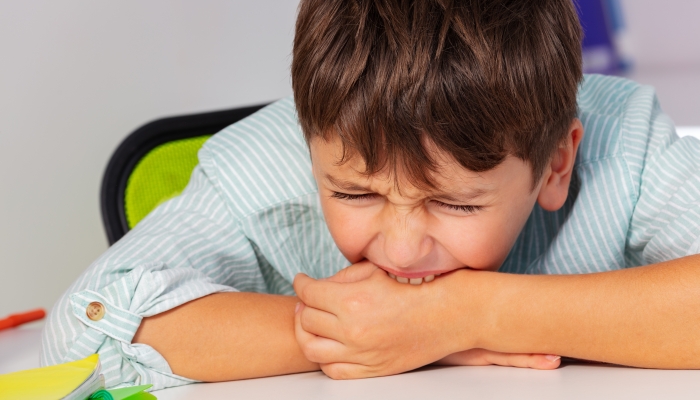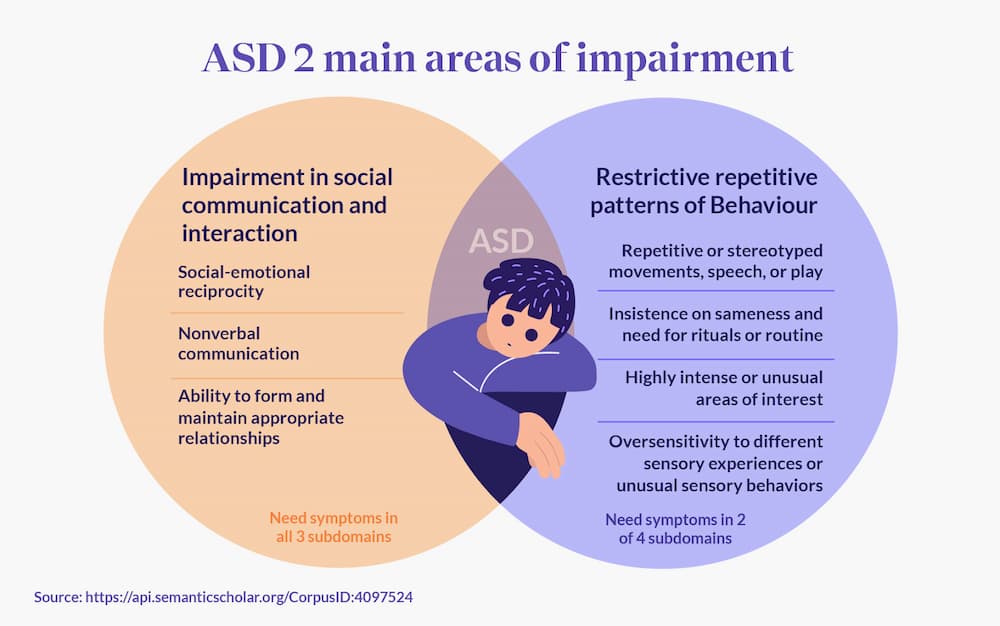Recognizing the Influence of Behavioral Autism on Day-to-day Live and Social Interactions
You could not realize exactly how deeply behavioral autism impacts everyday life and social interactions. Individuals on the range usually browse a globe full of interaction difficulties and sensory overload. These challenges can cause stress and isolation, influencing their relationships and general health. Recognizing these subtleties is essential for cultivating encouraging environments. What methods can we implement to develop more comprehensive spaces and significant links? The solutions might surprise you.
Defining Behavior Autism and Its Characteristics
Behavior autism, frequently described as autism range condition (ASD), includes a variety of conditions defined by challenges in social communication, communication, and repetitive habits. You might discover that individuals with ASD commonly have a hard time to analyze social hints, which can result in misunderstandings in discussions. They may discover it difficult to establish eye call or take part in small talk, making social scenarios really feel overwhelming.
Interaction troubles can show up in different means, from postponed speech advancement to a choice for making use of less words. Repeated habits, such as hand-flapping or rocking, can function as coping systems to take care of stress and anxiety or sensory overload. These characteristics can profoundly impact day-to-day live, making it vital for you to recognize and sustain those with ASD. By recognizing these qualities, you can foster an environment that promotes approval and encourages effective communication, helping people with autism prosper in their day-to-day communications.
The Range of Autism: Understanding Irregularity in Actions
Autism range condition (ASD) isn't a one-size-fits-all diagnosis; it varies commonly among individuals. You might notice that some people with ASD exhibit mild symptoms, while others might encounter extra substantial difficulties. This irregularity can manifest in habits, rate of interests, and sensory level of sensitivities. You might encounter individuals that are highly spoken and engage conveniently in conversations, while others may choose singular tasks or connect non-verbally.
Additionally, the means people with ASD respond to sensory input can vary significantly; some could be bewildered by loud sounds or intense lights, whereas others prosper in promoting settings. The spectrum additionally consists of differences in social communications; some individuals may struggle to translate social hints, while others navigate social setups with relative ease. Recognizing this irregularity is essential, as it assists you appreciate each person's distinct experience and dressmaker support to their specific needs, fostering an extra inclusive atmosphere for everyone.
Communication Challenges Encountered by People With Autism
When you engage with individuals on the autism range, you may discover their distinct communication challenges. They frequently deal with difficulties with both spoken and nonverbal cues, which can affect their social communications. Understanding these obstacles is important for fostering far better connections and assistance.

Verbal Communication Difficulties
Several individuals on the autism spectrum experience verbal interaction troubles that can considerably affect their daily communications. You could discover it testing to reveal your thoughts, sensations, or needs plainly. This can bring about stress for both you and those around you, as misunderstandings occur. You might deal with launching conversations, keeping a subject, or comprehending nuances in speech. Typically, you could favor using simple language or recurring phrases, which can limit your capability to engage in deeper conversations. Your pace, tone, or quantity might not align with social expectations, triggering others to misinterpret your intents. Acknowledging these obstacles can help you and your support network create approaches to enhance communication and cultivate better links with others in your day-to-day live.
Nonverbal Interaction Obstacles
Spoken communication isn't the only obstacle people on the autism spectrum face; nonverbal interaction obstacles can be simply as substantial. These difficulties can lead to misconceptions or misinterpretations of social signs, making communications feel frustrating or complicated. By resolving nonverbal communication, you can locate strategies to boost your social experiences and improve your total quality of life.
Social Interaction Effects
Social interactions can often really feel frustrating because of the unique communication challenges faced by people with autism. You may struggle with translating social signs, making it difficult to comprehend mockery or body movement. This can lead to misunderstandings or unpleasant minutes in discussions. Furthermore, starting and maintaining discussions may really feel difficult, creating anxiety in social scenarios. You may choose organized atmospheres, making spontaneous interactions awkward. It's likewise common to experience trouble in taking part in tiny talk, which can impede forming brand-new relationships. Identifying these difficulties can help you find strategies to enhance interaction, such as practicing social skills in secure setups or utilizing aesthetic aids - Autism Therapist. Recognizing your requirements permits you to navigate social communications with higher confidence and convenience.
Social Communication and Relationship Structure in Autism
While building connections can be challenging for individuals with autism, comprehending their special point of views and interaction designs can cultivate significant links. You might see that lots of individuals on the range prefer straight communication and may have problem with social cues or small talk. By being simple in your interactions, you can help create an environment where they feel comfortable.
Involving in shared rate of interests can likewise offer as a bridge to deeper links. Whether it's a pastime, a preferred program, or a shared passion, these usual threads can open up doors to relationship.
Daily Life Regimen: Browsing Challenges and Methods
Maneuvering life routines can be specifically testing for individuals with autism, particularly when unexpected changes happen. You may discover comfort in having an organized timetable, as it aids you expect what's following. It's typical to really feel anxious or overloaded when disruptions take place. To navigate these obstacles, think about executing visual timetables or lists. These devices can offer clarity and reassurance.
Establishing a regimen that consists of sensory breaks can also be useful. This assists create an understanding environment.
Finally, technique mindfulness methods to handle stress and anxiety site and anxiousness. Simple breathing workouts or basing methods can make a significant difference. By including these strategies, you can boost your day-to-day regimen and lessen disturbances, making life really feel more manageable.
Toughness and Capabilities of People on the Autism Range
Comprehending life regimens is just one aspect of the autism experience. Many people on the autism spectrum possess remarkable staminas and abilities that establish them apart. You might discover that your attention to information is exceptional, enabling you to master jobs that require precision and emphasis. Your ability to assume outside the box can result in ingenious services in different situations.
Moreover, your memory abilities usually radiate, particularly in areas of interest. Autism Spectrum Therapies. This propensity for preserving information can make you an important resource in fields like science, modern technology, or art. You may also display strong visual reasoning, enabling you to envision intricate concepts and fix problems artistically
Additionally, your distinct point of view on the globe can promote empathy and understanding in others, improving social communications. Accepting these staminas not only improves your self-confidence yet likewise aids others value the diverse talents you bring to the table.
Producing Inclusive Atmospheres for People With Autism
Developing comprehensive environments for individuals with autism begins with making sensory-friendly rooms that satisfy their one-of-a-kind demands. You can additionally foster chances for social interaction, helping to build links and friendships. By making these adjustments, you'll contribute to an extra inviting environment for everyone.
Creating Sensory-Friendly Spaces
While designing sensory-friendly spaces, it's essential to show on the special requirements of individuals with autism. Start by selecting relaxing shades and soft illumination to develop a comforting setting. Incorporate quiet areas where people can charge and retreat when bewildered. You'll desire to reduce loud sounds and interruptions, utilizing soundproof products or white sound equipments to help preserve harmony. Think about responsive components like soft materials or fidget-friendly objects that can give comfort. Ascertain that areas are flexible, permitting simple rearrangement to accommodate different activities. Include aesthetic schedules or clear signs to aid individuals browse the area with confidence. By thoughtfully incorporating these components, you can create a welcoming ambience that sustains sensory demands and promotes overall health.
Advertising Social Communication Opportunities
Designing sensory-friendly areas not only addresses specific comfort however likewise establishes the stage for meaningful social interactions among individuals with autism. Encourage peer mentoring, pairing individuals with autism with encouraging peers that can direct them via social situations. By carrying out great post to read these strategies, you can enhance social chances, assisting people with autism develop friendships and reinforce their social skills in a safe, welcoming environment.

Often Asked Inquiries
Exactly How Can Pals Assistance Someone With Behavioral Autism?
You can support a pal with behavioral autism by being client, listening proactively, and valuing their borders. Participate in tasks they enjoy, connect openly, and create a comfortable environment where they feel valued and recognized.
What Resources Are Available for Parents of Children With Autism?
You can explore numerous sources for moms and dads of children with autism, consisting of assistance groups, educational sites, and neighborhood social work. Getting in touch with other moms and dads can likewise offer important understandings and shared experiences to aid navigate challenges.
Can Behavioral Autism Adjustment In Time?

Yes, behavioral autism can change with time. You may observe shifts in interaction, social skills, and behavior as your youngster grows. Early intervention and assistance typically play crucial functions in these developing changes.
Just How Do Sensory Level Of Sensitivities Impact Every Day Life?
Sensory sensitivities can make daily experiences overwhelming. You might have problem with loud sounds or brilliant lights, bring about stress and anxiety or evasion. official statement Discovering settings that fit your demands can greatly enhance your convenience and general life.
What Are Typical Misconceptions Regarding Behavioral Autism?
You may assume behavioral autism only influences interaction abilities, yet it's even more complicated. Numerous assume people do not have compassion or intelligence, which isn't real. Recognizing these false impressions aids foster approval and support for those on the range.
Behavior autism, usually referred to as autism range disorder (ASD), incorporates an array of problems defined by challenges in social communication, communication, and repetitive actions.Social interactions can commonly really feel overwhelming due to the unique communication difficulties faced by people with autism.Creating sensory-friendly rooms not just addresses specific comfort yet also establishes the phase for purposeful social interactions amongst people with autism. Urge peer mentoring, coupling people with autism with supportive peers that can lead them via social circumstances. By applying these approaches, you can boost social opportunities, assisting individuals with autism develop relationships and strengthen their social abilities in a risk-free, inviting atmosphere.